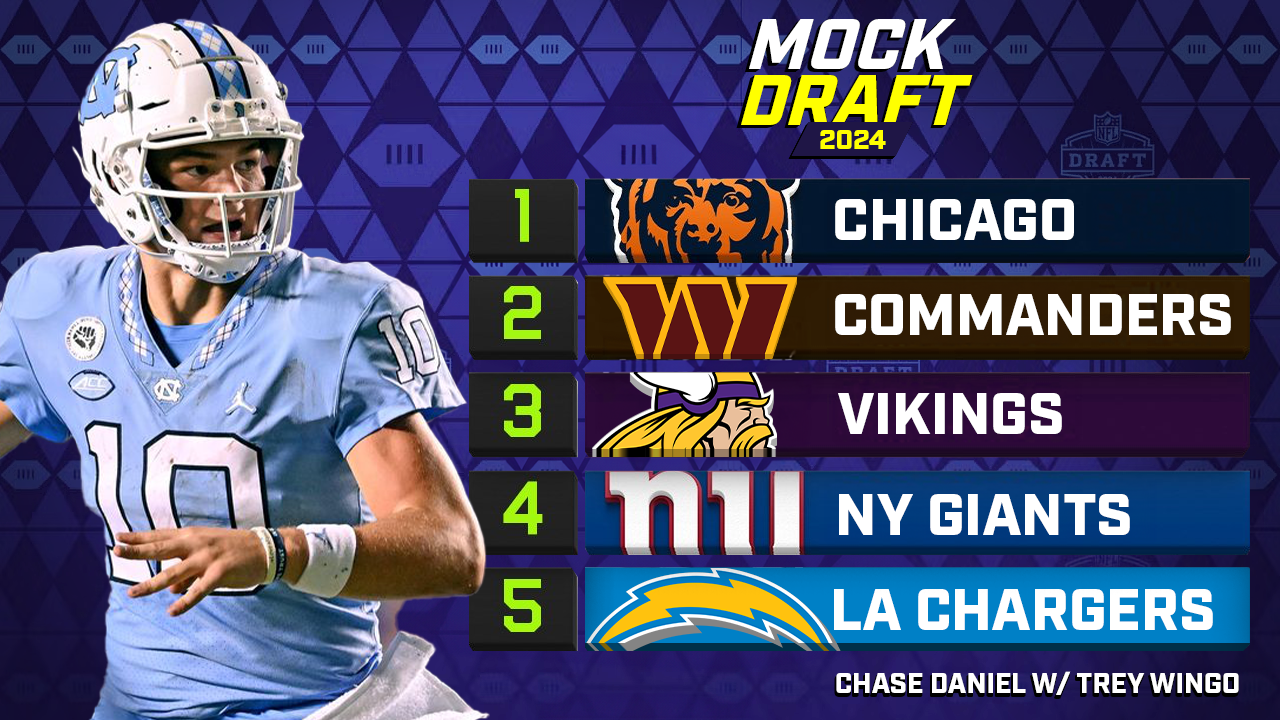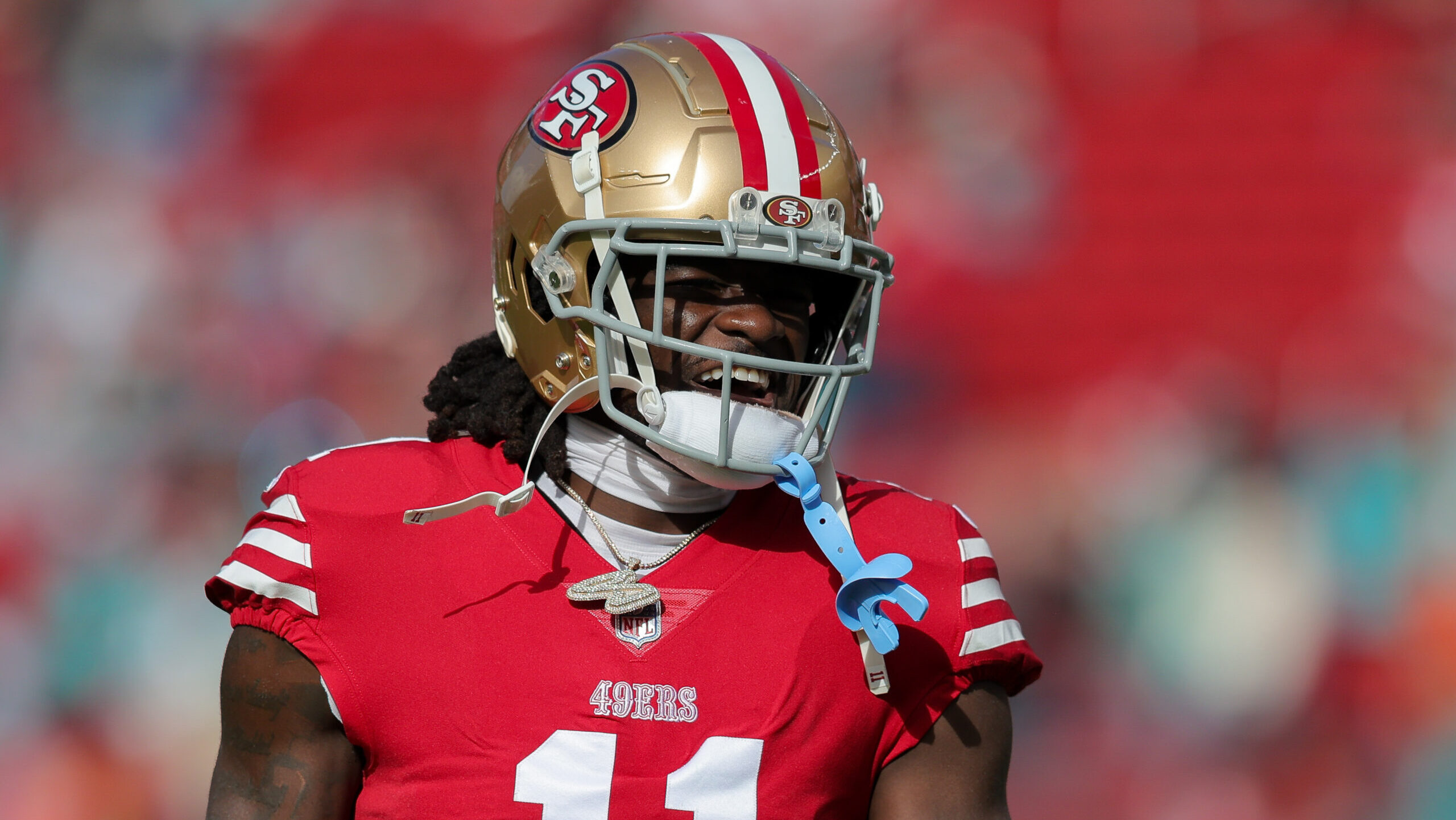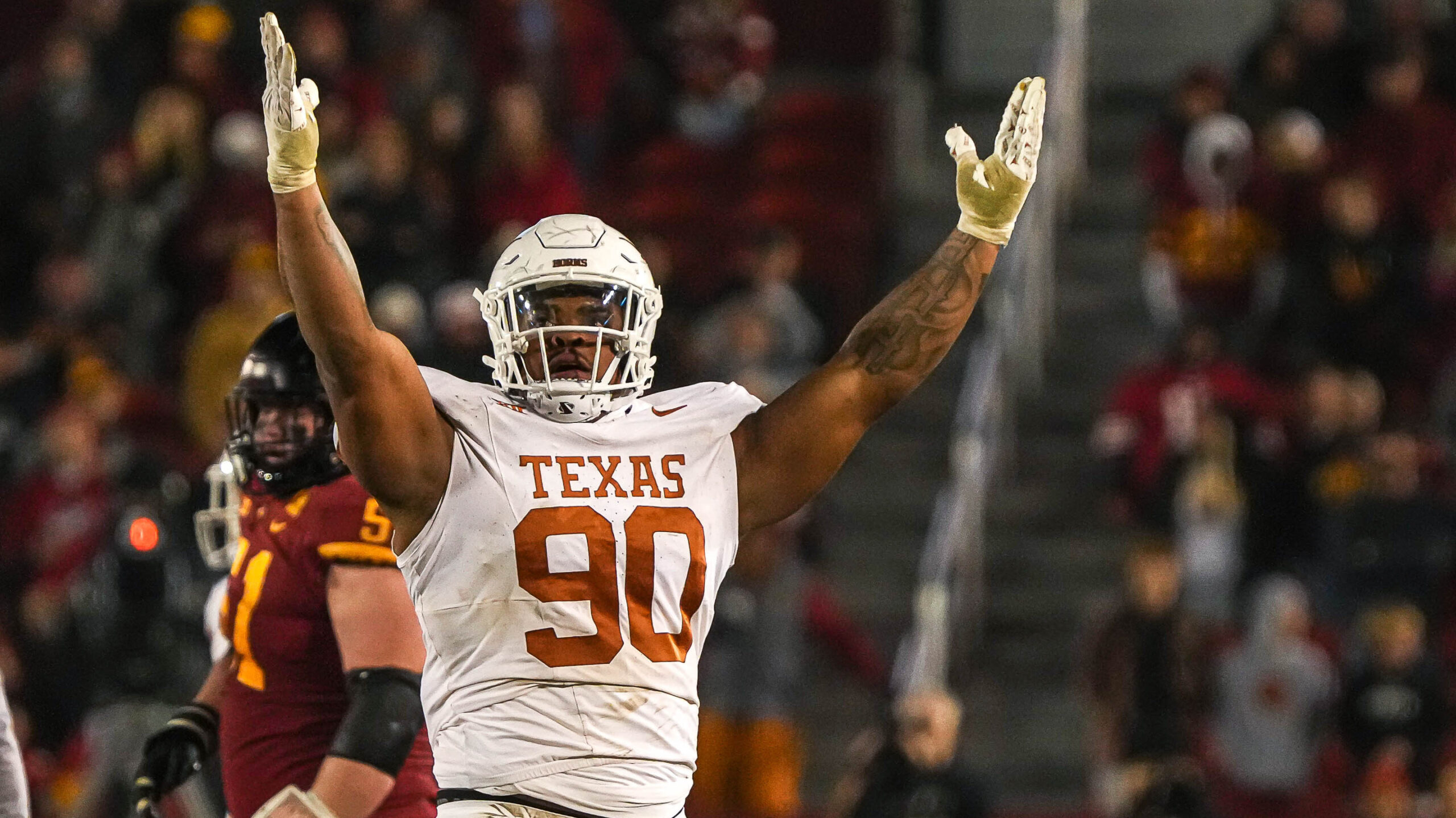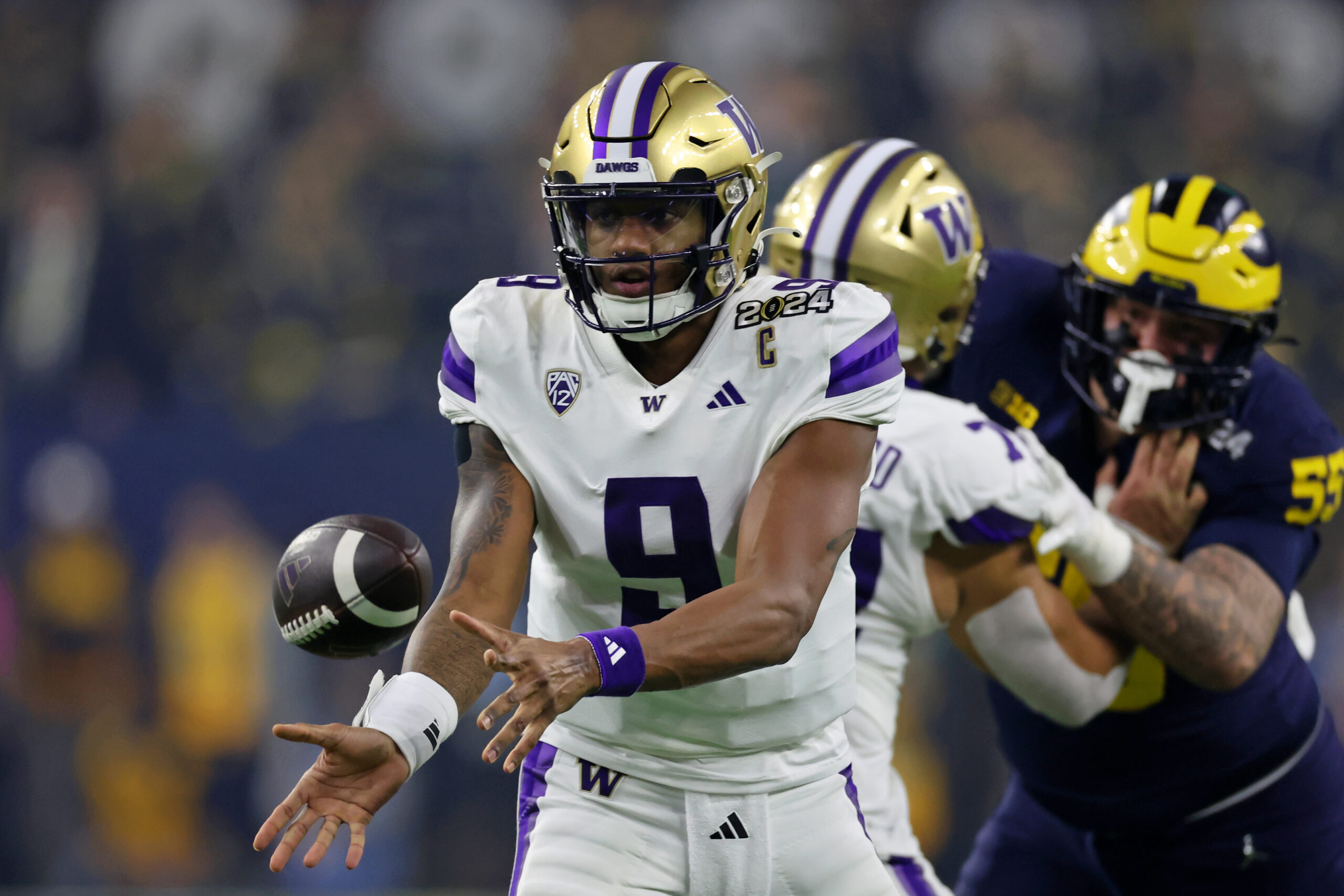NFL Analysis
9/6/21
5 min read
Inside the Numbers: Why Teddy Bridgewater Won the Broncos QB Battle
Although he’s now on his fourth team in five years, Teddy Bridgewater did enough in the 2021 preseason to beat out Denver’s incumbent QB Drew Lock for the starting role. Although Lock has consistently been the Broncos’ starter when healthy, including tying John Elway for the franchise record for rookie QB wins (4), Vic Fangio and the rest of the Broncos coaching staff were confident enough in Bridgewater to make the call after two preseason games. Using PFF, let’s go inside the numbers and see how each passer performed in the first two preseason games.
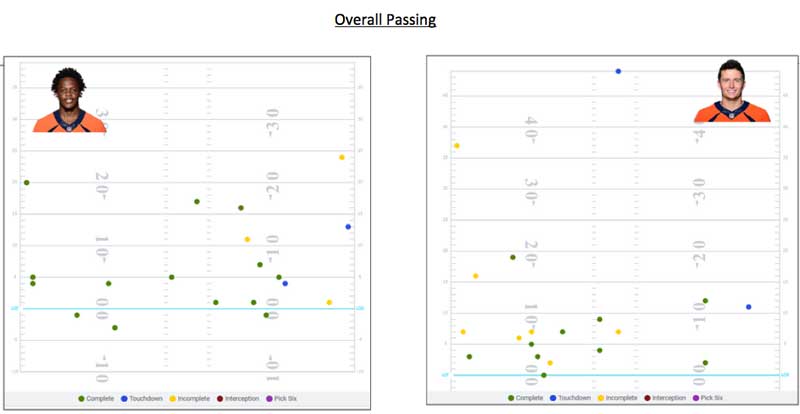
Here, we have every pass thrown by both QBs in the first two games of the preseason, colored by the pass result. Green dots indicate completions, yellow dots are incompletions and blue dots represent touchdowns. Immediately, we see a clear tendency by Lock to pass left. While Bridgewater has no incompletions to the left, there’s not an obvious pattern of what passes Lock is missing. Let’s add in some statistics to continue this comparison.

To get the obvious caveat out of the way first: Both Lock and Bridgewater played roughly the same number of first-half snaps, so there’s unlikely to be a clear distinction about what level of opponent they primarily played against. Their counting statistics seem fairly similar, with Bridgewater 16-for-19 and Lock 14-for-22 for two touchdowns each, but the rate statistics start to give the upper hand to Bridgewater. With an 84.2% completion rate and 141.0 passer rating, Bridgewater was highly efficient despite a similar average time to throw (avgTTT), and even avoided taking any sacks. Furthermore, Bridgewater dominated Lock in terms of EPA/Play, indicating that his plays were much more meaningful in progressing the offense when considering factors like down, yard-line and distance to the first down. The only area that Lock has any advantage is in average depth of target (ADOT), meaning that he is attempting deeper passes, as well as attacking past the sticks at a higher percentage. To get to the bottom of these passes, let’s investigate their deep passes.
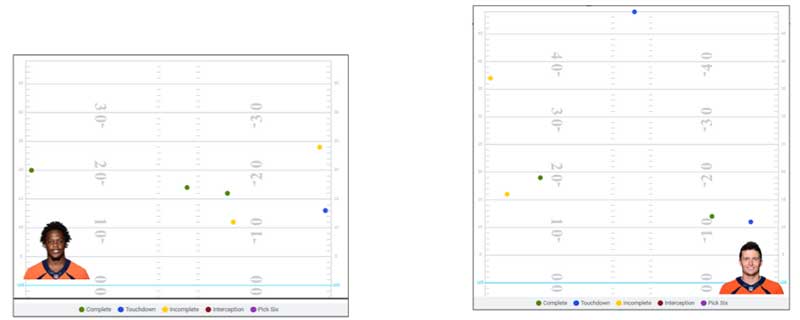
Here, we’ve only included their attempts of 10-plus yards. While we’ll get to the stats in a second, we notice that Lock attempted two passes deeper than anything Bridgewater attempted, resulting in a touchdown down the middle and an incompletion on the left sideline. Otherwise, they’ve each got a (relatively) short touchdown on the right side and a similar palette, completing intermediary throws across the field. The stats:

Now, Lock barely holds the advantage. Although they’re both 4-for-6, Lock’s deep touchdown puts him over the edge. What was this 80-yard score? The first play after a safety was a zone play-action from 21 personnel that matched the field-side WR in K.J. Hamler on a seam against a two-high Vikings defense. Press CB Cam Dantzler was noticeably limping on the play as he failed to keep up with Hamler downfield, while rookie S Cam Bynum was a college CB and bit on the play action, leaving him flat footed. In the pocket, Lock was untouched and stepped cleanly into his throw, lofting the ball on a vertical line down the field to an essentially uncovered Hamler. Should this throw distinguish the downfield passing of these two competitors? That’s up to the coaching staff to decide, but excluding that throw gives Bridgewater the edge or tie in all of counting statistics, as well as making the yards per attempt (YPA), ADOT and EPA/play much, much closer.
Finally, how did they perform when it mattered most? To evaluate this, we can look at third- and fourth-down pass attempts, as shown below.
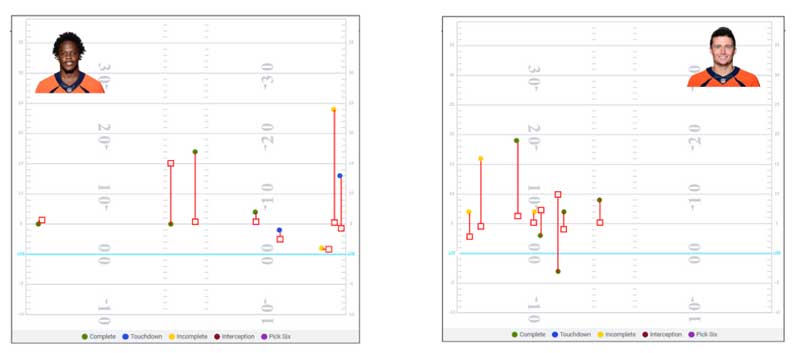
Again, they have the same number of relevant pass attempts, making comparison fairly easy, so we’ve added a bit of complexity to the pass charts in the form of the red lines & boxes. Those boxes represent where the first down was, so a box above its connected dot would be a throw short of the first down marker. Bridgewater threw at or beyond the first down marker on all but one throw (a third-and-15), while Lock had a pair of completions that fell clearly short. Again, Lock’s clear preference for the left side of the field shows here and seems to be even more pronounced in critical situations. He didn’t noticeably demonstrate that tendency last season, so the quarterback competition itself may have had an effect on him or the playcaller (OC Pat Shurmur) may believe that Lock is more effective to the left.

Although Lock has more total yards in these situations with a longer yards per attempt, the other statistics hint at why: He’s gotten great production after the catch from his receivers, with only 36% of his passing yards coming through the air despite nearly a half-second longer in the pocket than Bridgewater. Furthermore, Bridgewater’s two touchdowns push his EPA/play far beyond Lock, and his ADOT actually shows a passer attempting passes further down the field as well.
Hopefully these statistics show some of the reasons why the Broncos decided to go with the newcomer in the quest to capitalize on their offensive investment. With their 15th different starting QB since Von Miller’s 2011 arrival, the Broncos will attempt to knock off their division rivals en route to a playoff return.


